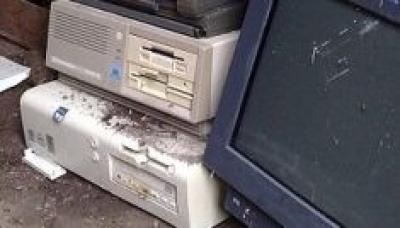Local E-Waste Set To Soar In Developing World

The United Nations Environment Programme fears that an anticipated rise in electronics sales in developing nations will mean exponentially increasing amounts of hazardous e-waste
As electronics sales in China, India and large portions of Africa and Latin America are expected to rise dramatically over the next 10 years, UNEP (the United Nations Environment Programme) is fearing that the build-up of hazardous electronic waste will increase as well.
To estimate the current and future levels of e-waste—from sources including old PCs, mobile phones, music devices and televisions—UNEP issued a report on 22 Feb. titled, “Recycling, from E-Waste to Resources.” Containing data from 11 developing nations, it offers a frightening portrait of pollution and waste, estimating that approximately 40 tons of e-waste is being generated globally each year.
According to the report, computer e-waste in South Africa and China is expected to increase by between 200 and 400 percent over 2007’s figures by 2020, while in India the growth is estimated at 500 percent. In China, mobile phone waste is expected to grow to seven times the 2007 levels by 2020, and in India to 18 times the 2007 levels. ”This report gives new urgency to establishing ambitious, formal and regulated processes for collecting and managing e-waste via the setting up of large, efficient facilities in China,” Achim Steiner, executive director of UNEP, said in a statement. “China is not alone in facing a serious challenge. India, Brazil, Mexico and others may also face rising environmental damage and health problems if e-waste recycling is left to the vagaries of the informal sector.” Steiner added that, “In addition to curbing health problems,” the benefits of formal e-waste recycling programs include that they can “generate decent employment, cut greenhouse gas emissions and recover a wide range of valuable metals, including silver, gold, palladium, copper and indium.”
Steiner concluded, “By acting now and planning forward, many countries can turn an e-challenge into an e-opportunity.” The report additionally states that “mining and production of copper and precious and rare metals used in electrical and electronic equipment are estimated at over 23 million tons” of carbon dioxide emissions. It also recommends “facilitating exports of critical e-scrap fractions like circuit boards and batteries” from countries without appropriate facilities to those considered “OECD-level, certified end processors.” ”One person’s waste can be another’s raw material. The challenge of dealing with e-waste represents an important step in the transition to a green economy,” said Konrad Osterwalder, the United Nations’ under-secretary general.
In November, the GSM Association in collaboration with The Climate Group introduced a Green Manifesto outlining goals for mobile communications companies wanting to reduce greenhouse gas emissions. The GSMA represents 800 mobile operators across 219 countries.